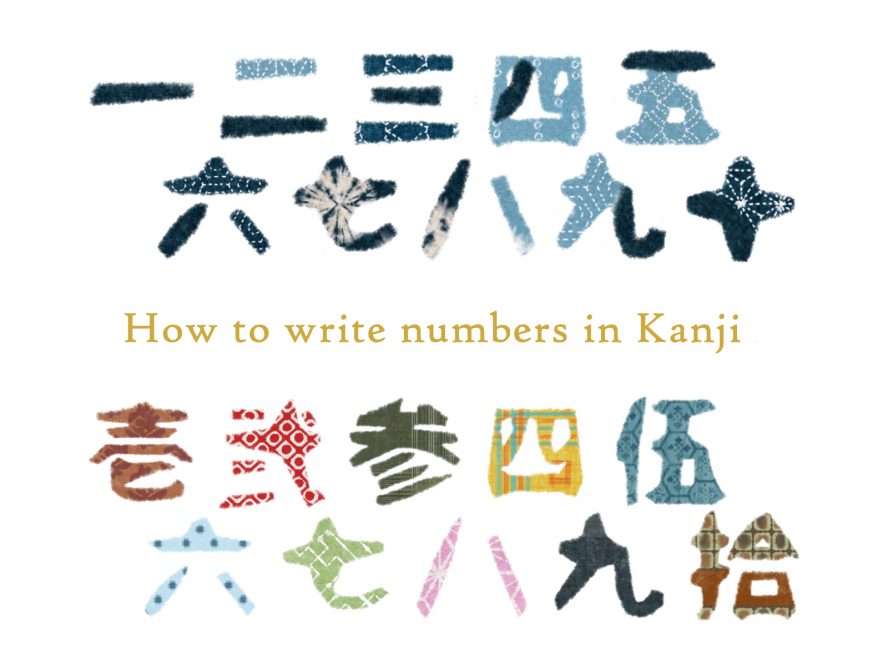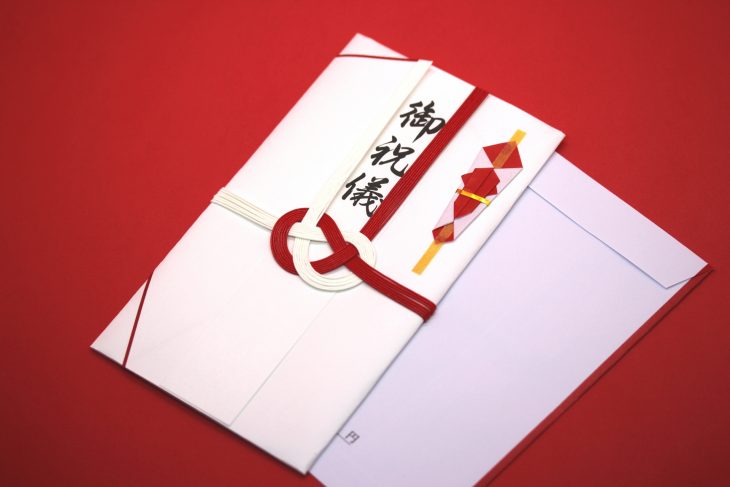Share this link via
Or copy link
One of the best Japanese Kanji dictionary.

First of all, the way of writing numbers is different in vertical writing and horizontal writing.
When you write Japanese horizontally, basically, Arabic numerals are used.
Kanji for numbers (漢数字, Kansūji) is basically for vertical writing.
Contents
| Arabic numerals | Kanji | Pronunciation |
|---|---|---|
| 0 | 〇 | zero, rei |
| 1 | 一 | ichi |
| 2 | 二 | ni |
| 3 | 三 | san |
| 4 | 四 | shi, yon |
| 5 | 五 | go |
| 6 | 六 | roku |
| 7 | 七 | shichi |
| 8 | 八 | hachi |
| 9 | 九 | kyū |
| 10 | 十 | jū |
| 10² | 百 | hyaku |
| 10³ | 千 | sen |
| 10⁴ | 万 | man |
| 108 | 億 | oku |
| 1012 | 兆 | chō |
| 1016 | 京 | kei, kyō |
| 1020 | 垓 | gai |
| 1024 | 秭 | jo, shi |
| 1028 | 穣 | jō |
| 1032 | 溝 | kō |
| 1036 | 澗 | kan |
| 1040 | 正 | sei |
| 1044 | 載 | sai |
| 1048 | 極 | goku |
| 1052 | 恒河沙 | gōgasha |
| 1056 | 阿僧祇 | asōgi |
| 1060 | 那由他 | nayuta |
| 1064 | 不可思議 | fukashigi |
| 1068 | 無量大数 | muryōdaisū |
| 10100 | ゴーゴル | gōgoru 🙂 |
First, I will explain the basic rules in vertical writing because English is written only horizontally. Then I will show how the numbers are written in horizontal writing.
When writing the amount of money, or 和暦(Wareki, Japanese imperial year), you use 単位数字.
Examples
三十円(30 yen)…①
平成三十一年(The 31st year of Heisei)…②
If you want to express decimal, the point is written as “・.”
Example
五・五(5.5)…③
When writing fractions, you will use “XX分のX.”
Example
二分の一 (1/2)…④
Round figures are expressed with “、.”
Example
二、三人 (two or three people)…⑤
“人” (nin) is a quantifier when counting people.
If you are writing a year in the western calendar, phone number, zip code, or address you will not use 単位数字. Instead, you will use 〇 for zero.
Examples
a) Year:
二〇二〇年 (2020)…⑥
b) Phone number:
〇三―五二五三―二一一一 (03-5253-2111, Prime Minister’s office)…⑦
c) Zip code and address:
〒一〇〇―八九六八
東京都千代田区永田町一―六―一 (Nagatacho 1-6-1, Chiyoda-ku, Tokyo, 100-8968)…⑧
“〒” is a symbol for zip code and pronounced as 郵便番号yūbinbangō.
By writing horizontally, you may find it hard to distinguish one(一)and hyphen(-), However, there is no need to confuse since hyphen is written vertically.
When the number is combined with alphabets in a word or is a part of a name, numbers are written in Arabic numerals.
Example
A4版(ē yon ban, A4-sized)
ビタミンB1(Bitamin bī wan, Vitamin B1)
ボーイング787(Bōing nanahachinana, Boeing 787)…⑨
Let’s see how they look like in vertical writing.

Basically, Arabic numerals are used in horizontal writing. However, there are some exceptions to use Kanji.
The Kanji characters explained above are the ones used in daily lives.
However, there are more complex Kanji characters to write numbers. These are called 大字(Daiji) and are used in documents such as 領収書(receipt written by hand), or loan agreements.
These are for avoiding falsification since Kanji characters such as 一・二・十 could be altered by adding some strokes.
Probably the most common situation Japanese use these characters is when writing the amount of money on the envelope of a wedding money gift.

You write your name, address, and the amount of money you give on the inner envelope. You have to write the amount of money by 大字, for example, 金参萬円(money 30,000 yen).
| Arabic numerals |
大字(Daiji) | |
|---|---|---|
| 新字体(Shinjitai)*¹ | 旧字体(Kyūjitai)*² or 俗字(Zokuji)*³ |
|
| 0 | 零 | |
| 1 | 壱 | 壹、弌 |
| 2 | 弐 | 貳、貮 |
| 3 | 参 | 參、弎 |
| 4 | 肆 | |
| 5 | 伍 | |
| 6 | 陸 | |
| 7 | 漆 | 柒 |
| 8 | 捌 | |
| 9 | 玖 | |
| 10 | 拾、什 | |
| 100 | 陌、佰 | |
| 1,000 | 阡、仟 | |
| 10,000 | 萬 | |
*¹ 新字体(Shinjitai) and *² 旧字体(Kyūjitai) : 新字体, “new character form” is the simplified form of Kanji used nowadays. It is made by reducing strokes of 旧字体, ”old character form”, which is more complex.
*³ 俗字(Zokuji) : non-standard characters
Although Daiji was initially made to avoid falsification, these Kanji characters somehow have some traditional, retro, or nostalgic images. Therefore, it may be used as a way of expressing those kinds of impressions.
What is Onyomi?
Onyomi, also known as the "Sino-Japanese reading," is one of the two main reading systems for kanji characters in Japanese. It refers to the reading of a kanji character that is derived from the original Chinese pronunciation.
What is Kunyomi?
Kunyomi, also known as the "native Japanese reading," is one of the two main reading systems for kanji characters in Japanese. It refers to the reading of a kanji character that is based on the native Japanese pronunciation. Kunyomi readings are often used when a kanji character stands alone or is followed by hiragana, as in verbs and adjectives. Mastering both kunyomi and onyomi is crucial for understanding and using kanji effectively in the Japanese language.
What is Radical?
A radical, also known as "bushu" in Japanese, is a fundamental component of kanji characters. Radicals are the building blocks of kanji and are used to categorize and organize them in dictionaries. There are 214 traditional radicals, each with its own meaning, which often provides a clue to the meaning of the kanji character it forms.
What is strokes?
Stroke count, or "kakusuu" in Japanese, refers to the number of individual brushstrokes required to write a kanji character. Each kanji has a specific stroke order and stroke count, which are essential for writing the character correctly and legibly. Understanding and following the correct stroke order not only ensures proper balance and aesthetics but also makes writing more efficient and fluid.